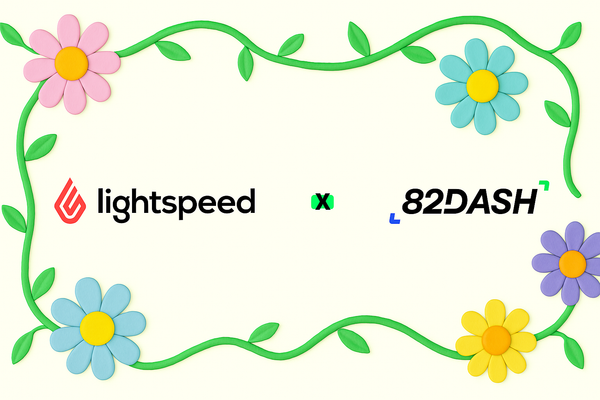Is Paid UGC Just Another Form of Influencer Marketing?
Is paid UGC just influencer marketing without the followers? We explore how user-generated content has drifted from its authentic roots—and how Shopify brands can find a smarter, more trustworthy balance.

User-generated content (UGC) began as a way for brands to showcase authentic customer experiences, relying on organic reviews, visuals, and testimonials to build trust.
The idea is simple: let real people share their real stories.
But over time, UGC drifts from its roots. It evolves into a tool for paid creators—micro-influencers and actors producing polished, brand-approved content. While paid UGC has its benefits, this shift raises a critical question:
Is paid UGC really just influencer marketing without the followers?
For a deeper look at how UGC has evolved into a double-edged sword for marketers, see this Berkeley Business Review article.
How UGC Loses Its Way
The original purpose of UGC is to tap into real customer experiences—genuine moments that resonate because they are relatable and unscripted. However, brands find it difficult to rely solely on organic UGC. Authentic customer content is hard to incentivise, unpredictable, and lacks the consistency that large-scale marketing campaigns demand.
Enter the UGC creator: someone who delivers high-quality, well-scripted, and perfectly shot content on demand. This solves several problems for brands:
- Consistency: Professional creators provide reliable, polished content on schedule.
- Control: Brands can direct the narrative, ensuring the messaging aligns with their goals.
- Scalability: A network of creators can produce large volumes of content quickly.
However, as explored in Capsule’s blog, this shift has created myths around UGC that confuse its original intent. While effective, this shift has moved UGC further from its origins.
The line between paid UGC and traditional influencer marketing is now blurred.
Creators act as “actors for hire,” often featuring in multiple campaigns for different brands—sometimes even competitors—diminishing the authenticity that makes UGC so powerful in the first place.
The Problem with Paid UGC

Paid UGC isn’t inherently bad—it has clear advantages. It works well for ads and often performs better than traditional branded content. But it also comes with significant drawbacks:
1. Perceived Authenticity:
Consumers are savvy. They can tell when a “real customer” in an ad is actually a paid creator. Seeing the same face promoting different brands erodes trust, as explored in this Insense article.
2. Cheap Acting:
Many paid UGC creators deliver polished performances, but often it’s just that—a performance. What was meant to feel like a genuine review ends up looking like scripted, low-budget acting. Billo’s blog breaks down how UGC creators and influencers sometimes blur the line between authenticity and acting.
3. Erosion of Trust:
UGC’s power lies in its ability to build trust. When it starts to resemble traditional advertising, it loses the emotional resonance that makes it so effective. For insights into how UGC can regain trust, check out this Forbes article on community commerce.
Why UGC Needs a Return to Its Roots
To reclaim its authenticity, UGC needs to shift back toward real community and customer-generated content. But this doesn’t mean abandoning paid UGC altogether. Instead, brands must strike a balance between leveraging professional creators and empowering their communities to contribute.
For an example of the divide between paid and organic UGC, see this TikTok comparison or explore insights on The UGC Club’s breakdown.
Here’s how brands can achieve this balance:
1. Incentivise Real Customers:
While unpaid, organic UGC is the ideal, incentivising real customers with discounts, loyalty points, or exclusive perks can encourage participation. For example, offering rewards for sharing photos or videos of purchased products helps generate authentic content.
2. Support Community Engagement:
Create platforms or campaigns that make it easy for customers to share their experiences. Highlight user submissions on social media or feature them in email campaigns to show your community their voices matter.
3. Focus on Relatability Over Perfection:
Imperfect lighting, unpolished delivery, and unscripted moments feel real. Embrace the flaws - they’re what make UGC relatable and trustworthy. For a closer look at this concept, see this blog from GhostRetail.
4. Blend Professional and Organic Content:
Use professional UGC creators to establish a framework, then layer in authentic contributions from actual customers. This creates a hybrid approach that balances quality with authenticity.
5. Provide Clear Briefs:
As discussed in Achilles Girl’s blog, brands that clearly outline what they’re looking for—tone, style, and message—see more aligned and successful UGC submissions.
The Case for Customer-Generated Content
It’s time to reimagine UGC as customer-generated content—a collaborative effort that puts real customers and engaged communities at the heart of your brand. As highlighted by Emplifi, this shift prioritises authenticity and inclusivity, creating stronger emotional connections with audiences.
Paid UGC has its place, but it works best when paired with genuine customer stories. Brands that embrace this balance stand out in a market saturated with polished ads and scripted testimonials.
Because at the end of the day, trust isn’t bought—it’s earned.
Isabelle Simon - Communications Lead - 82DASH




